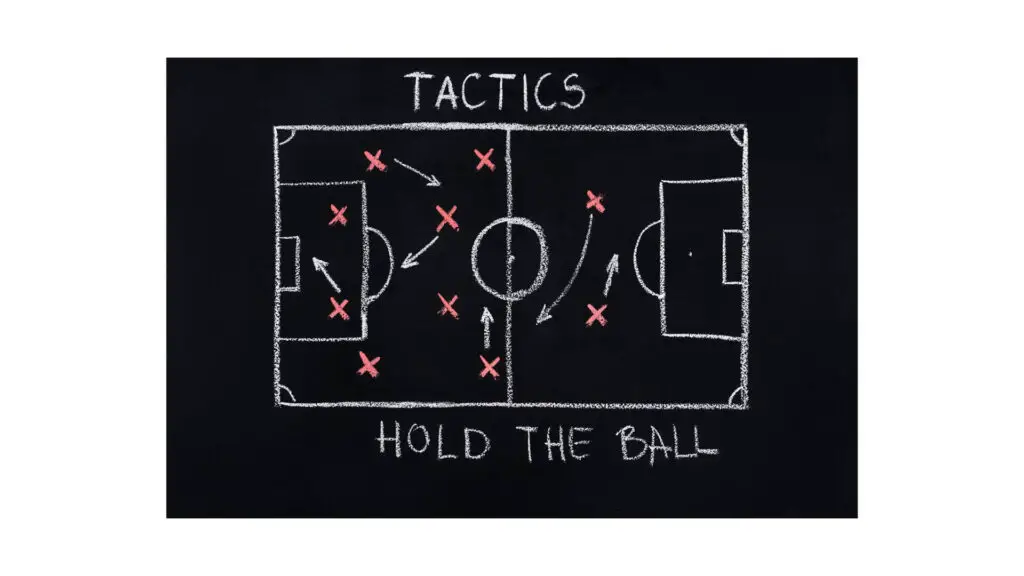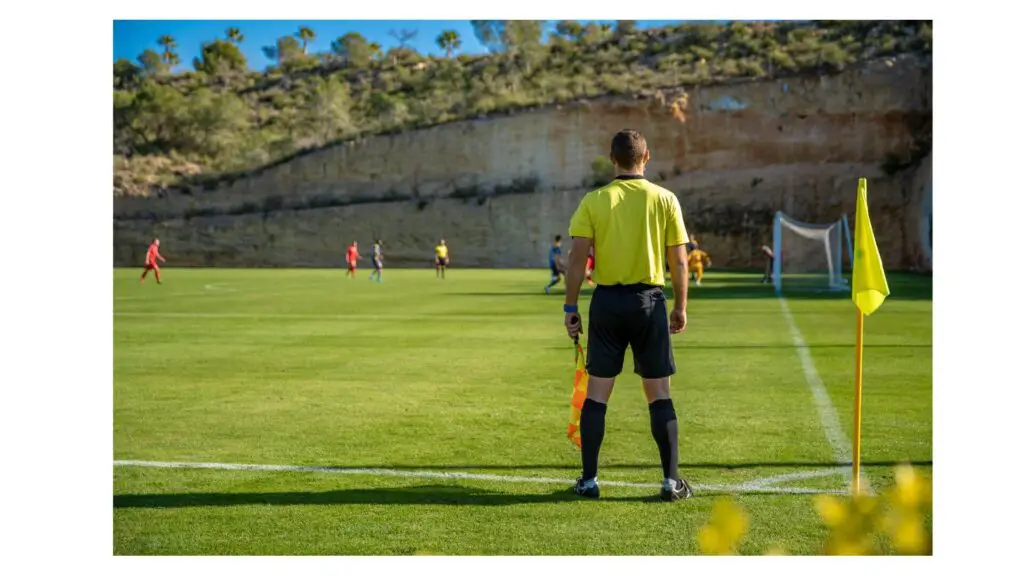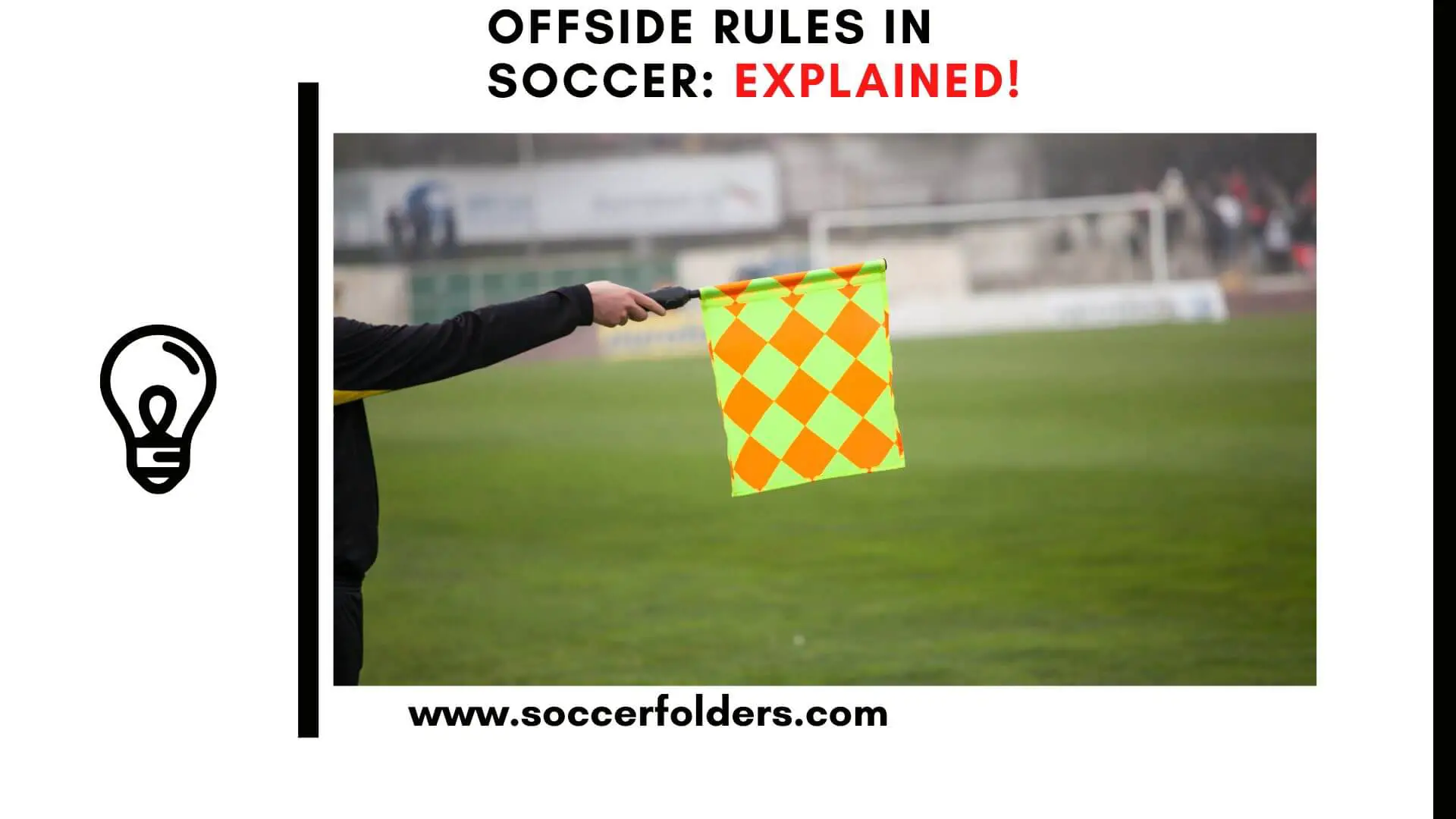Offside rules in soccer can be one of the most confusing aspects of the game for both players and fans.
However, understanding these rules is crucial for anyone looking to improve their understanding of the sport.
In this article, you will find out everything there is to know about the offside in soccer.
Without further ado, let’s get started.
Offside Rules In Soccer
First, let’s kick off this with the three main things you should know about the offside in soccer:
- The basics of the offside rule
- Exceptions of the offside rule
- Discretions of referees
1. The Basics Of The Offside Rule
The offside rule is in place to prevent players from gaining an unfair advantage by positioning themselves closer to the opponent’s goal than the ball.
For a player to be considered offside, they must be closer to the opponent’s goal line than both the ball and the second-to-last defender (usually the last defender is the goalkeeper).
It’s important to note that a player can be onside or offside regardless of whether they are involved in active play.
For example, a player can be offside even if they are not touching the ball, as long as they are in an offside position when the ball is played to them.
==>>You can also read: The Rules of soccer simplified
2. Exceptions Of The Offside Rule
There are a few key exceptions to the offside rule.
One of the most important is the “active play” exception, which states that a player cannot be offside if they are not involved in the play.
This means that if a player is not actively trying to influence the game, they cannot be offside, even if they are closer to the opponent’s goal line than the ball.
Another exception is the “back-pass” rule, which states that a player cannot be considered offside if they are the first to touch the ball after it is deliberately or unintentionally kicked to them by a player from the opposing team.
This exception is in place to prevent players from being penalized for receiving a pass that was intended to be played backwards.
There are also cases when a player will not be considered offside despite being in an offside position.
One of these cases is if the player was in an offside position but did not affect the play, meaning they did not interfere with the opponent’s play.
3. Discretion Of Referees
Referees use their discretion in determining whether a player is in an offside position and whether the offside rule has been broken.
As mentioned earlier in this article, it’s important to note that offside is not always called even if a player is in an offside position if the player does not affect the play.
The History And Evolution Of The Offside Rule
The offside rule has a long and interesting history, dating back to the early days of soccer.
The first offside rule was introduced in 1863, it stated that a player could not be involved in the game if he was closer to the opponent’s goal than the ball and three of the opposing players.
This rule was later modified to two players, and then in 1925 to the current rule of the second-to-last defender.
The history of the offside rule shows how the game has evolved, and how the rule has been modified to adapt to the changing nature of the sport.
Understanding the history of the offside rule can provide insight into why the rule is structured the way it is, and how it has been used to shape the modern game.
It also shows how the rule has been adjusted to promote a more fluid and free-flowing game.
The Impact Of Offside Rule On The Strategy And Tactics Of Teams
The offside rule plays a significant role in the strategy and tactics of soccer teams.

For teams with a strong defensive focus, understanding the offside rule and how to exploit it can lead to a significant advantage.
For example, those defending teams can use offside traps to catch the opposing team in an offside position.
We have seen it in the 2022 World Cup between Iran vs Argentina.
On the other hand, teams with a more offensive focus may choose to drop deeper to prevent their players from being caught in offside positions.
The offside rule also plays a role in determining the positioning of players on the field, with forwards often positioned closer to the opponent’s goal and midfielders and defenders positioned deeper to avoid being caught in an offside position.
Understanding how the offside rule can affect team strategy and tactics is essential for coaches, players, and fans to appreciate the nuances of the game and gain insight into the teams’ decisions.
The Role Of The Assistant Referees In Determining Offsides
The role of the assistant referees, also known as linesmen, in determining offside is crucial.

They are responsible for monitoring the offside positions of players and making offside calls, signalling to the referee when a player is in an offside position.
Assistant referees are positioned on the touchline and have a clear view of the offside line, which is the line that runs parallel to the goal line and passes through the second-to-last defender.
Assistant referees also use a flag to signal to the referee when they believe an offside has occurred.
They are trained to make quick and accurate offside calls, and their role is vital in ensuring that the offside rule is correctly enforced during the game.
Additionally, with the use of VAR, the assistant referees have an even more important role in judging offside calls, as they can analyze different angles and make sure the call is correct.
The Use Of Technology (VAR) In Offside Calls And Its Impact On The Game
The use of Video Assistant Referee (VAR) technology in offside calls has had a significant impact on the game of soccer.
VAR allows referees to review footage of offside situations and make a more accurate decision.
The system uses a combination of cameras and software to create a precise offside line, which is then used to determine whether a player is in an offside position.
This technology has been implemented in many professional leagues, and it has helped to reduce the number of incorrect offside calls.
VAR has also helped to increase the transparency of the offside rule, as fans and analysts can now review footage of offside situations and understand why a particular call was made.
However, it’s worth noting that VAR has also met with some criticism, as it can slow down the game and some argue that the calls are not always clear-cut.
Additionally, the implementation of VAR in lower levels of the game is not always feasible due to the costs and availability of the technology.
The Effect Of The Offside Rule On The Evolution Of The Soccer Positions
The offside rule has had a significant impact on the evolution of soccer positions over the years.
In the early days of soccer, the offside rule was less restrictive, and players were able to position themselves closer to the opponent’s goal. As a result, teams tended to field more forwards and fewer defenders.
However, as the offside rule became more restrictive, teams had to adapt by positioning more players in deeper positions to avoid being caught in offside positions.
This has led to the development of specialized positions such as the “sweeper-keeper” and the “libero”, which were introduced to help teams deal with the offside rule.
Additionally, the evolution of the offside rule has also led to the formation of different playing styles, like the “catenaccio” style of play which emphasizes defensive tactics and counter-attack strategies.
Understanding how the offside rule has impacted the evolution of football positions and playing styles is essential for anyone looking to gain a deeper understanding of the sport.
Final Word
In summary, the offside rule in soccer is in place to prevent players from gaining an unfair advantage by positioning themselves closer to the opponent’s goal than the ball.
Understanding the exceptions to this rule, such as the “active play” and “pass-back” exceptions, is crucial for anyone looking to improve their understanding of the sport.
Additionally, it’s important to note that offside is not always called even if a player is in an offside position if the player does not affect the play.
Hope you have gained value from this article.

